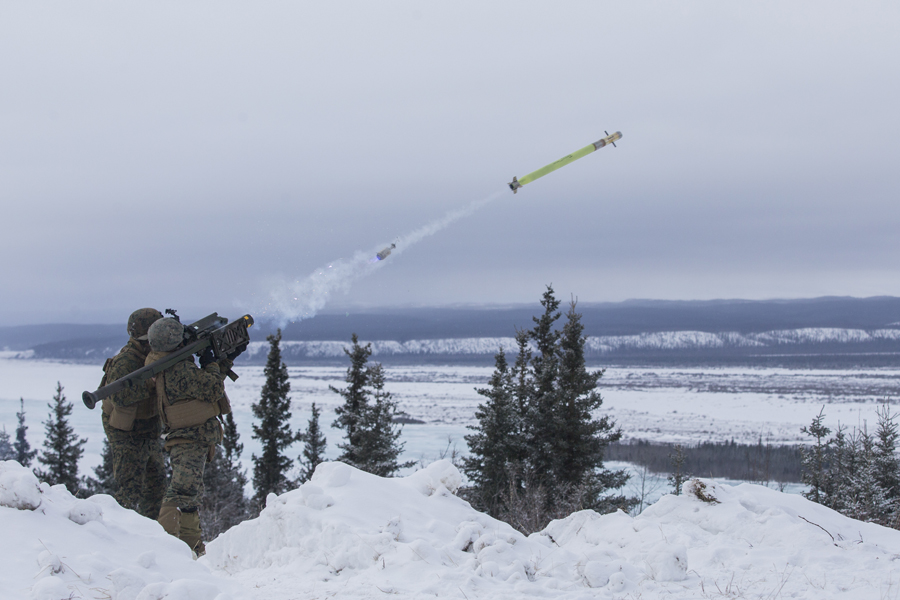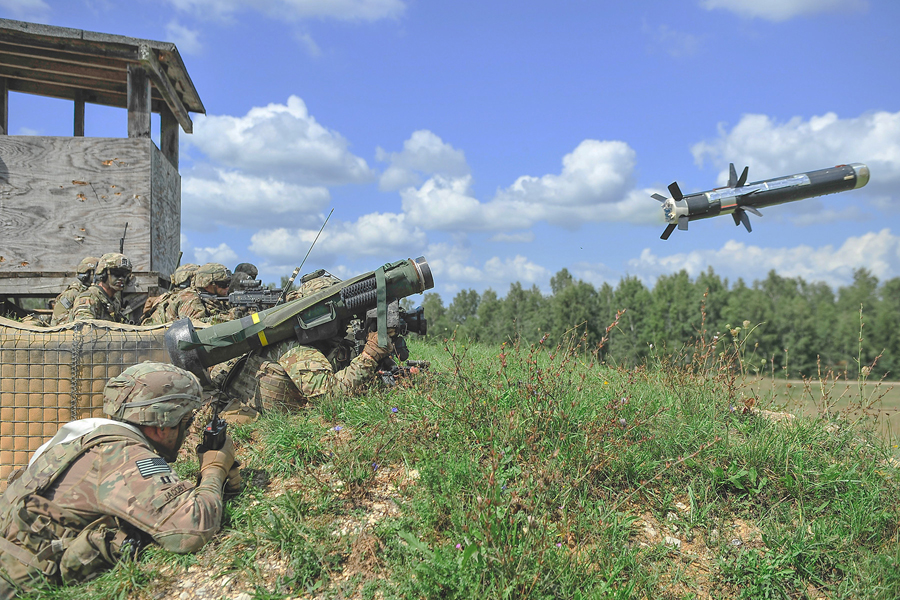Following Russia’s invasion of Ukraine in February 2022, the United States made a long-term commitment to provide Ukraine with the tools and equipment it needs to defend its sovereignty.
Since then, more than $14.5 billion in aid has been committed for Ukraine.
Some of the assistance provided was new and purchased under contract from defense industry manufacturers under the Ukraine Security Assistance Initiative. But much of the equipment, worth about $12.5 billion, was provided under the Presidential Drawdown Authority. This means that items such as Javelin and Stinger missiles, HIMARS rocket launcher systems and Switchblade unmanned aerial systems, for example, were taken directly from existing US military inventory to be sent overseas.
Because so much equipment has been removed from US military units, that equipment must now be replaced in order to maintain America’s readiness, and the Department of Defense has already contracted with an array of manufacturers to give back to military units what was taken from them in order to support Ukraine.
“As we work with industry to ramp up production on resupply systems and direct purchases under the Ukraine Security Assistance Initiative or USAI, we are using a number of tools to secure funding and contracts are happening quickly,” Bill LaPlante, the Under Secretary of Defense for Acquisition and Sustainment, said during a Sept. 9, 2022 briefing at the Pentagon.
Already, about $1.2 billion in contracts are underway to replenish US military stockpiles of weapons sent to Ukraine, LaPlante said. This includes approximately $352 million in funding for the Javelin missile replacement, $624 million for the Stinger missile replacement, and $33 million for the HIMARS systems replacement.
Additional contracts worth $1.2 billion are currently underway for equipment pledged to Ukraine under the USAI, including items such as 155mm munitions, Switchblade unmanned aerial systems, radar systems and tactical vehicles.
The Department is accelerating those efforts by using undefined contract actions, or UCAs, to get industry to work on contracts before they’re defined, LaPlante said.
“You can set up a UCA in a week, and we do that,” he said. “We also use Indefinite Delivery/Indefinite Quantity, or IDIQ, contracts. If you have IDIQs, and we have lots of them, what you can do is just add work orders to them very quickly to get contracted equipment.
In late April, Secretary of Defense Lloyd J. Austin III participated in the first meeting of Ukraine’s Defense Contact Group where leaders from approximately 40 nations gathered to discuss current and future efforts to provide support for Ukraine and to help Ukraine maintain its sovereignty. forward. Today, the contact group comprises about 50 nations, and the group concluded its fifth meeting in Germany yesterday.
Now, as an offshoot of the contact group, LaPlante said he would meet on September 28 with the national armaments directors of other contact group countries to discuss how the global defense industrial base can continue. to support Ukraine now and in the future.
“Right now we have three types of themes — but that will evolve as we set the agenda,” LaPlante said. “The first is to compare notes and provide status reports on ramping up production of key capabilities. We have a lot to learn from each other. »
Developing an overall picture of the defense supply chain is also on the agenda, he said.
“[This includes] what do we see in the supply chain…typical elements of the supply chain are microelectronics and its obsolescence, things like ball bearings even and solid rocket motors [and] other sensors,” he said. “We want to compare notes on what people see in their supply chain and the responses people have had.”

Finally, he said, a topic of discussion will be building both interoperability between systems and also increasing interchangeability. “It’s the ability for us to take ammunition from one country and use it in a weapon system of another, and vice versa.
Just yesterday, the Department of Defense announced a new presidential levy in security assistance worth up to $675 million. The package includes, among other things, more ammunition for HIMARS, four 105mm howitzers with 36,000 accompanying rounds, additional high-velocity anti-radiation missiles and 1.5 million small arms rounds, Sasha said. Baker, deputy assistant secretary of defense for policy.
“This is the 20th batch of prints we’ve delivered to Ukraine,” Baker said. “That includes equipment… the Ukrainians have already demonstrated, in many cases, that they can put it to good use.”
The latest security assistance package brings the total amount of U.S. assistance to Ukraine since the February invasion to more than $14.5 million, Baker said.
“We believe this underscores our unwavering support for Ukraine as it continues to defend its sovereignty in the face of Russian aggression,” Baker said. “We believe, ultimately, that Russia’s efforts have not succeeded and will not succeed. And when it comes to helping Ukraine defend itself, and when it comes to making sure there is significant pressure on Russia to end this conflict, [that requires] ensuring that our own alliance is as strong and as resolute as possible to deter Russian aggression.
This unity of effort and determination, Baker said, was evident at the last meeting of the Contact Group for the Defense of Ukraine, and has been evident throughout, as demonstrated by the Ukrainian people.

